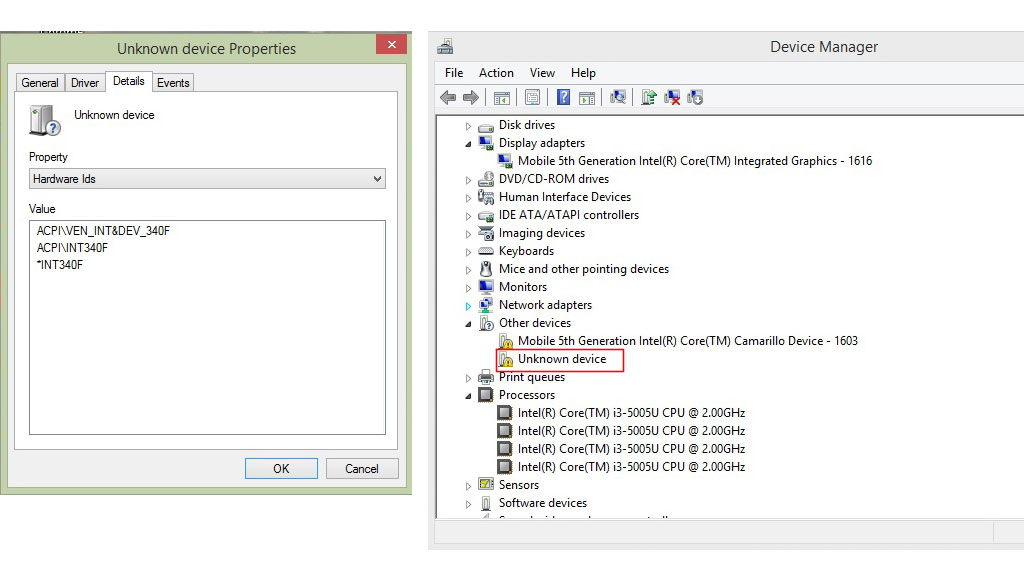We live in a world where mobility is king. Our on-the-go lifestyle demands small efficient devices, from smartphones to tablets and 2 in 1s. This is how we work and, quite often, play. Power efficiency is of paramount importance in the mobile world. Intel is focused on fast, powerful, and power-efficient technologies for mobile devices. However, this push for power-efficient processors can have unintended effects on game performance. One such feature that may impact game performance is the Intel® Dynamic Platform and Thermal Framework (Intel® DPTF). Here I discuss what Intel DPTF is and the possible performance impact.
What is Intel® DPTF?
Use either the automatic or manual method to download the correct Intel® HD Graphics Drivers for Intel® Pentium® Processors and Intel® Celeron® Processors. Option one: Automatically identify and install the graphics driver using the Intel® Driver & Support Assistant. Feb 19, 2014 Intel® Dynamic Platform and Thermal Framework (DPTF) Driver This package provides the driver for the Intel® Dynamic Platform and Thermal Framework (DPTF) and is supported on the Inspiron 3138 running the following Windows operating systems: Windows 8.1.
Intel Dynamic Platform and Thermal Framework driver is seen on every computer with Intel chipset, but many of us are not sure what it does exactly, not to mention knowing what to do about it when it refuses to setup. The package provides the installation files for Intel Dynamic Platform and Thermal Framework Power Participant Driver version 8.3. If the driver is already installed on your system, updating (overwrite-installing) may fix various issues, add new functions, or just upgrade to the available version. Intel® Driver & Support Assistant (Intel® DSA) The Intel® Driver & Support Assistant keeps your system up-to-date by providing tailored support and hassle-free updates for most of your Intel hardware. View a list of driver & software exclusions.
Intel Dynamic Platform and Thermal Framework is a power and thermal management solution at the platform level that utilizes both hardware and software. Intel DPTF is a coordinated approach for different policies that affect the hardware state of a device. It acts as a container of multiple power and thermal technologies. The high-level architecture of Intel DPTF is shown in Figure 1.
Figure 1:The high level Intel® Dynamic Platform and Thermal Framework architecture.
Intel DPTF is a BIOS ACPI implementation on specific devices/systems. Technologies contained within the framework are mainly focused on thermal management per the ACPI 5.0 specification. The thermal management technology contained in Intel DPTF is called Intel® Dynamic Power Performance Management (Intel® DPPM). Intel DPPM is an intelligent closed-loop hardware and software solution designed to manage platform thermals in a constrained design. An OEM design team controls platform skin and component temperatures, allowing them to design for a 'typical' rather than 'worst case' power scenario and minimize any performance impact. Intel DPPM technology has a series of policies that can be used to more efficiently control platform behavior when a thermal event is triggered, see Table 1.
Table 1:Intel® Dynamic Power Performance Management thermal policy descriptions.
| Policy | Description |
|---|---|
| Passive | Responsible for limiting power and performance of components in response to a temperature rising above the platform trip point. |
| Active | Cools a platform by removing heat instead of limiting the power or performance, generally by enabling a platform fan at various speeds. |
| Critical | If the platform reaches a critical temperature, this policy is responsible for shutting down the system gracefully. The system can also be moved to a hibernate or shutdown state depending on what critical event occurs. |
Game performance impact in Tablet Mode on 2 in 1 devices
A very small number of game developers have reported performance issues with 2 in 1 devices in tablet mode that are attributed to Intel DPTF. In tablet mode Intel DPTF will often use a passive policy, meaning available power is reduced so the device stays at a comfortable thermal level for handling. Whereas in laptop mode the device is often sitting on a surface and skin temperature is less of a concern. The processor increases frequency in response to application need by utilizing Intel® Turbo Boost Technology. When increasing above the base frequency there are 2 limits, the max frequency (defined by the OEM) and the power available. As Intel DPTF has lowered the available power to keep the device from getting too warm to comfortably hold, it also restricts how far Intel® Turbo Boost Technology can increase the frequency and thus lower game performance.

Intel DPTF is a power and thermal management solution for device and chassis temperature and managing power delivery. Often the key to extended life is lower power usage, limited power means lower operating frequencies. Something that is not an issue with common applications, but in rare cases may have an impact on game performance in tablet mode. Game performance is not always impacted as a result of Intel DPTF, but it is possible. If you are observing a performance difference between tablet and laptop modes on a 2 in 1 device with your game, there is no function within the graphics driver or operating system to disable Intel DPTF. If the OEM’s design team included the option to disable Intel DPTF, consumers can disable it, but doing so will sacrifice battery life. Disabling Intel DPTF requires the consumer to enter the configuration section of their device’s BIOS.
Reference & Related Links
- Intel product names http://www.intel.com/products/processor_number/
About the Author
Intel Dptf Driver Manual
Michael Coppock specializes in PC game performance and graphics and has been with Intel since 1994. He helps game companies get the most out of Intel GPUs and CPUs. Focusing on both hardware and software, he has worked on many Intel products, all the way back to the 486DX4 Overdrive processor.